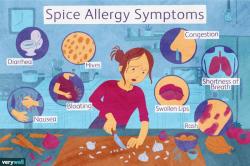Are Rales and crackles the same?
"Rales" and "crackles" are terms used to describe specific types of abnormal respiratory sounds that healthcare professionals may encounter during the examination of the lungs. While these terms are sometimes used interchangeably, they can refer to different types of sounds, and there is some variability in their usage. Let's explore the distinctions:
Rales (or Rales):
- "Rales" is often used to describe a specific type of abnormal lung sound that is heard during auscultation (listening with a stethoscope). Rales are also known as "crackles," and the two terms are frequently used interchangeably. Rales or crackles are discontinuous, brief, and non-musical sounds that resemble the noise produced by rubbing strands of hair together. They may be fine or coarse, and their presence can indicate various respiratory conditions, such as pneumonia, heart failure, or interstitial lung disease.
Crackles:
- "Crackles" is a more general term that encompasses various abnormal respiratory sounds heard during lung auscultation. While rales are a type of crackle, the term "crackles" can also refer to other types of sounds, such as wheezes. Crackles are characterized by their non-musical, popping or crackling nature, and they may be classified as fine or coarse based on their characteristics. Fine crackles are higher-pitched and often associated with conditions like pulmonary fibrosis, while coarse crackles may be heard in conditions like chronic bronchitis.
In summary, rales and crackles are terms used to describe abnormal lung sounds, but "rales" is often used synonymously with "crackles." Both terms typically refer to discontinuous, non-musical sounds heard during lung auscultation, and their presence can be indicative of various respiratory and cardiac conditions. Healthcare professionals may use these terms interchangeably, but the context of their usage can vary. The key is to recognize and differentiate abnormal lung sounds during clinical assessments to aid in the diagnosis and management of underlying respiratory conditions.
In medical terminology, while closely related, Rales and Crackles are not entirely interchangeable terms:
1. Interchangeability:
- Historically: Both terms were used interchangeably to describe discontinuous lung sounds associated with fluid or mucus in the airways.
- Modern Practice: A trend towards using them as distinct terms is emerging, with rales generally considered coarser and crackles finer.
2. Distinguishing Features:
- Pitch: Rales are typically lower-pitched and louder than crackles.
- Duration: Rales tend to be longer in duration than crackles, which are described as brief, popping sounds.
- Quality: Rales can be described as bubbling, coarse, or grating, while crackles are often described as finer, crackling, or velcro-like.
- Timing: Rales might be heard throughout the breathing cycle, while crackles are more often heard at the end of inspiration.
3. Differentiation by Healthcare Professionals:
- Auscultation: Healthcare professionals primarily rely on listening to the specific characteristics of the sounds using a stethoscope.
- Context: Other factors like the patient's medical history, symptoms, and chest X-ray findings can aid in differentiating between rales and crackles.
4. Underlying Causes:
- Both Rales and Crackles can arise from fluid or mucus accumulating in the airways.
- Specific Causes:
- Rales: Pneumonia, pulmonary edema, heart failure, bronchitis.
- Crackles: Interstitial lung disease, pulmonary fibrosis, early pneumonia.
5. Treatment Approaches:
- Treatment depends on the underlying cause.
- General principles:
- Addressing the primary cause, like treating infections or managing heart failure.
- Clearing the airways through medications or chest physiotherapy.
- Managing symptoms like cough or shortness of breath.
Remember, accurately distinguishing between Rales and Crackles requires professional medical expertise. If you notice unusual lung sounds, consult a healthcare professional for proper diagnosis and treatment.













